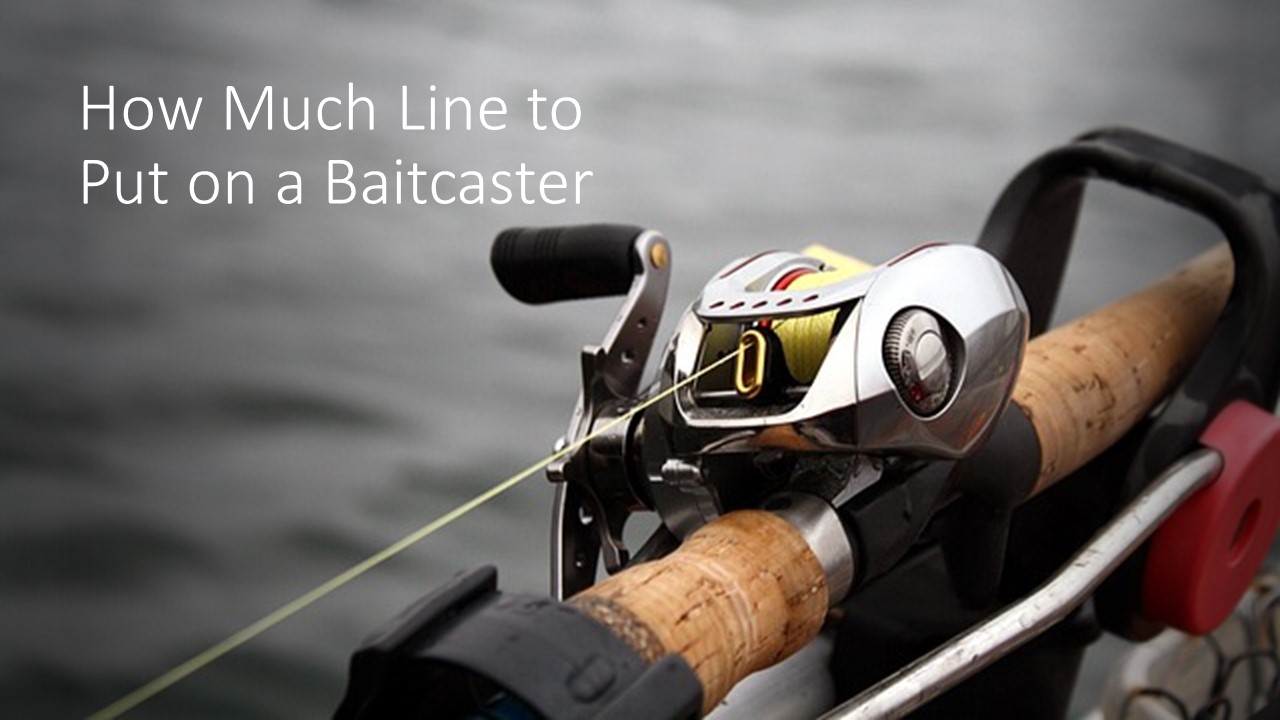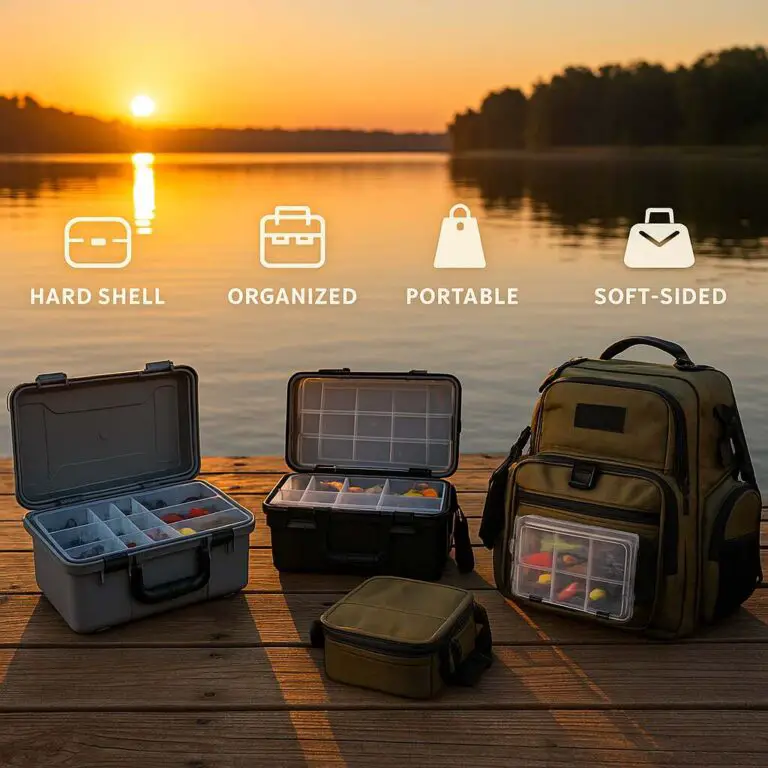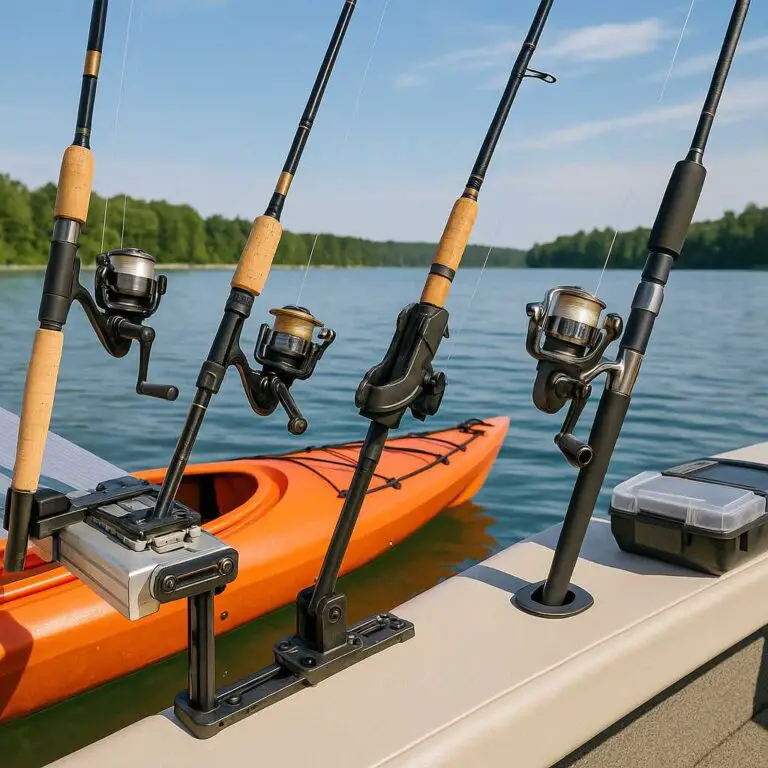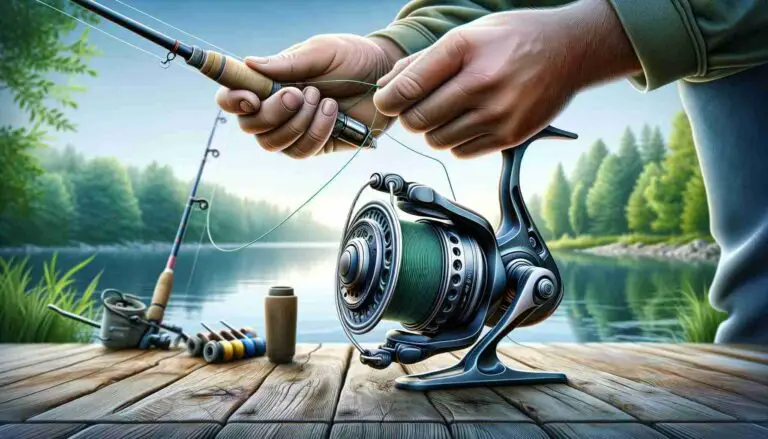One of the crucial aspects of baitcasting is knowing just how much line to put on your reel. Trust me, getting this right can make a world of difference in your fishing experience.
The amount of line to put on a baitcaster depends on the reel’s line capacity. As a rule of thumb and for optimal performance, fill your baitcaster spool until there’s about a 1/8 inch gap between the line and the top of the spool.
But there’s more to that. So, grab your favorite beverage, sit back, and let’s explore the ins and outs of spooling line on a baitcaster together.
Why the Right Amount of Line Matters
Understanding why the correct amount of line is essential can significantly improve your fishing experience. Too much or too little line can lead to various problems, such as:
- Overfilling: This can cause backlash or bird’s nest, a common issue where the spool releases more line than needed, creating tangles.
- Underfilling: This reduces casting distance and control, making it harder to reach your desired spot and manage your line effectively.
Factors to Consider When Spooling Your Baitcaster
Several factors influence how much line you should put on your baitcaster:
- Reel Capacity: Check the reel’s specifications for line capacity, usually indicated in yards for different line types and diameters.
- Line Type: Different lines (monofilament, fluorocarbon, braided) have varying diameters, affecting how much line your reel can hold.
- Fishing Technique: Techniques such as flipping, pitching, or casting long distances require different amounts of line.
- Target Species: Larger fish may require more line to accommodate long runs, while smaller fish may not need as much.
Step-by-Step Guide to Spooling Your Baitcaster
Step 1: Gather Your Equipment
Before you start, ensure you have the following:
- Baitcasting reel
- Fishing rod
- Line (monofilament, fluorocarbon, or braided)
- Line conditioner (optional)
- Line spooler (optional but helpful)
- Scissors
Step 2: Attach the Line to the Reel
- Thread the Line: Pass the line through the rod guides, starting from the tip down to the reel.
- Tie the Knot: Attach the line to the reel spool using an arbor knot. Make sure it’s secure and trim any excess line.
Step 3: Begin Spooling
- Apply Tension: Hold the line between your thumb and forefinger to maintain tension.
- Start Reeling: Slowly start reeling the line onto the spool, ensuring it goes on evenly without overlapping.
- Check the Fill Level: Fill the spool until it’s about 1/8 inch from the rim. This allows for optimal performance without risking backlash.
Step 4: Final Adjustments
- Cut the Line: Once you’ve spooled the desired amount of line, cut it from the spool, leaving a bit of slack to tie your lure or rig.
- Test the Setup: Make a few practice casts to ensure the line flows smoothly and there’s no excessive slack or tension.
How Much Line Should You Put on Your Baitcaster?
Monofilament Line
Monofilament is versatile and user-friendly, making it popular among anglers. Here’s a general guideline:
- Medium Reel (150 yards capacity): Spool around 100-120 yards.
- Large Reel (200 yards capacity): Spool around 150 yards.
Fluorocarbon Line
Fluorocarbon is less visible underwater and offers excellent abrasion resistance. For fluorocarbon:
- Medium Reel (150 yards capacity): Spool around 90-110 yards.
- Large Reel (200 yards capacity): Spool around 130-150 yards.
Braided Line
Braided line has a smaller diameter, allowing more line to be spooled. However, it’s best used with a backing (monofilament or fluorocarbon) to prevent slipping:
- Medium Reel (150 yards capacity): Spool around 130-150 yards, considering backing.
- Large Reel (200 yards capacity): Spool around 180-200 yards, considering backing.
Common Mistakes and How to Avoid Them
Overfilling the Spool
- Problem: Leads to frequent backlash and tangles.
- Solution: Always leave about 1/8 inch from the rim of the spool to allow for smooth casting.
Underfilling the Spool
- Problem: Reduces casting distance and control.
- Solution: Ensure the spool is adequately filled to optimize casting performance.
Using the Wrong Line Type
- Problem: Different lines have varying diameters and properties.
- Solution: Choose the line type based on your fishing needs and reel specifications.
Tips for Maintaining Your Line
- Regular Inspection: Check your line regularly for signs of wear and tear, especially after catching a big fish or fishing in rough conditions.
- Use Line Conditioner: Apply a line conditioner to reduce memory and enhance casting performance.
- Store Properly: Keep your rod and reel in a cool, dry place to prevent line degradation.
FAQs
How Often Should I Replace My Fishing Line?
- Monofilament: Replace every 6-12 months, depending on usage and exposure to elements.
- Fluorocarbon: Replace every 12-18 months.
- Braided: Can last several years but inspect regularly for fraying.
Can I Mix Different Line Types on My Baitcaster?
Yes, you can use a combination of lines, such as a braided mainline with a fluorocarbon or monofilament leader, to take advantage of the strengths of each line type.
How Do I Know If My Line Is Properly Spooled?
Your line is properly spooled if it flows smoothly off the reel during casting and retrieval, with no excessive slack or tightness, and without frequent backlash or tangles.
Conclusion
In conclusion, for a baitcaster, you should spool your line until it’s about 1/8 inch from the rim of the spool. This ensures smooth casting without the risk of overfilling or underfilling, which can lead to backlash or reduced casting distance. The specific amount of line depends on the type of line and the reel’s capacity:
- Monofilament: Medium reel (100-120 yards), Large reel (150 yards)
- Fluorocarbon: Medium reel (90-110 yards), Large reel (130-150 yards)
- Braided: Medium reel (130-150 yards), Large reel (180-200 yards), considering backing
Adjust the amount of line based on the type of line and the reel’s capacity.
Check my last post: Do Bass Eat Shrimp? Is Shrimp A Good Fishing Bait? Answered








